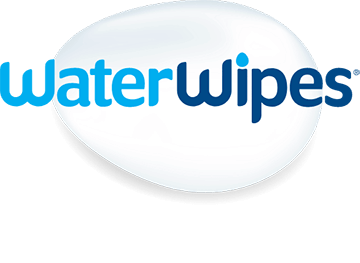Understanding the causes of baby nappy rash
Nappy rash is something that most babies experience and is a part of the cycle of caring for babies' skin. The skin on your baby’s bottom is sensitive and delicate, so nappy rash is a normal part of life.
If fact, up to a third of babies and toddlers in nappies have nappy rash at any one time.1 It is most commonly caused by irritation of the skin from the ammonia in wee and poo. However, in some instances nappy rash can also be caused by a fungal infection.
Nappy rash is characterised by red patches on your baby's bottom, or the whole area may be red. Their skin may look sore and feel hot to touch, and there may be spots, pimples or blisters.1
Mild nappy rash - Pink or red spots. These spots may merge into blotches, affecting a small part of the nappy area. Baby is generally well but may cry when passing wee and poo
Severe nappy rash - Bright red spots and cracked skin affecting a large part of the nappy area. Baby may be irritable and restless.
Fungal nappy rash - Inflamed skin and red spots around the edges of the rash. The folds of the skin may also be affected.
Here, GP Dr Pixie McKenna and consultant dermatologist Dr Cairine Wilkinson share their top tips and advice.
Dr Pixie explains that there are various causes of nappy rash. These can include:
The skin being in contact with wee or poo for a long time
The nappy not being changed often enough or area not being properly cleaned
Use of soaps, detergents or bubble bath on the skin
The nappy rubbing against the skin
Alcohol-based or fragranced baby wipes
Your baby recently taking antibiotics
Diet - citric juices from foods like oranges, strawberries and tomatoes
How you can treat your baby's nappy rash
Dermatologist Dr Cairine Wilkinson notes that: “The best way to deal with nappy rash is to try to prevent your baby getting it in the first place. But, if your baby gets nappy rash, you can usually treat their skin yourself.”
Dr Cairine’s top nappy rash prevention tips include:
Avoid soaps, bubble baths and lotions. Wash your babies' bottom with water and avoid any products with ingredients that can irritate babies' delicate skin
If using wipes, use fragrance-free and alcohol-free baby wipes. Check the back of the pack to ensure they do not contain alcohol or other unnecessary ingredients. WaterWipes are the world’s purest baby wipes and provide gentle but effective cleansing for your baby or toddler’s skin.
When changing baby, dry the skin thoroughly, patting instead of rubbing if the area is sore
At each nappy change apply a thin layer of a barrier cream or a barrier spray to dry skin. Ask your health visitor or pharmacist to recommend one.
Avoid using talcum powder, this can also irritate the skin
Leave your baby’s nappy off for as long as you can to let fresh air get to their skin. If this isn’t possible, ensure dirty nappies are changed as soon as possible.
It is find to bath your baby every day (especially if they have eczema) but three times a week is enough to keep the skin clean. A pure wipe such as WaterWipes can be used to gently and effectively cleanse in between bath times
GP Dr Pixie McKenna explains: “Nappy rash should clear up after about three days if you follow these hygiene tips. However, if you are at all concerned about the rash, if you think your baby has something that is not nappy rash and has lingered longer than three days or if it is causing your baby discomfort, get advice from a healthcare professional.”
If the rash is severe, take your baby to the GP who may prescribe cream or medicine. Follow your GP's instructions on whether and when to apply barrier cream as well as the prescribed cream.
It's normal for babies to develop skin rashes, but it's important to know the difference between a minor irritation and a condition that requires attention.”
You're not the only parent with a baby who has nappy rash, read some more of our tips on parenting community.
Reference:
1 https://www.nhs.uk/conditions/pregnancy-and-baby/nappy-rash/

